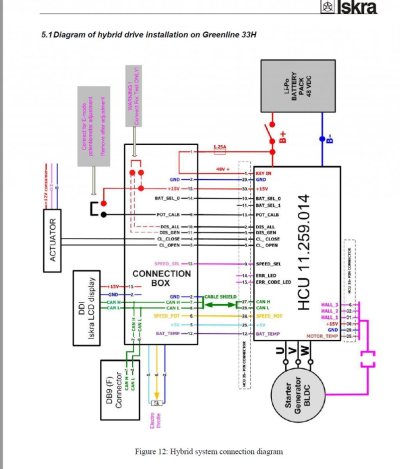My first concern would be the hybrid battery. But it sounds like you've got that one covered! I am a little confused that you state "two" battery packs. Does that mean you have 2x240AH LiPos? If so, I am jealous! I always wanted more range on electric

Other than the battery, I have the following thoughts for things to check on an older GL33:
1) Find out if the master and the slave hybrid hydraulic clutches have been replaced by the previous owner. If not, then you'd best plan on an additional $5k to have a professional/yard do this when the time comes. Parts are difficult to come by, but can be made up.
2) Check carefully in the forward cabin against the anchor locker bulkhead for any signs of water leakage on the "velour" sidewalls. This can be difficult to troubleshoot and stop. I'm in the process of doing this now. Have had some conversations with the current manufacturer, SVP, and they did inform me that some of the very early GL33's (e.g. 2010 at least) had a very few screws through the deck. These could be the source of water ingress. If the forward teak deck has to come up and be replaced, SVP can still get new teak "kits" from their vendor at least for another 1-2 years.
3) Check the rudder for wobbling and water ingress where the shaft comes into the cockpit. While the rudder bearing might be just fine, I found that the "bushing" holding the entire apparatus in place against the bottom needed to be re-packed in my case. Not horribly expensive, but can be a nuisance if you discover this while the boat is in the water and you want to stop annoying small amounts of water from accumulating in the bilge under the aft deck.
4) Carefully check the linkage where the gearshift cable connects to the engine. Right at the little "ball fitting" There can be some parts that, due to poor design, have worn and need to be replaced. The pieces are nothing that special and only worth a few dollars. A clever yard or mechanic can put together something that will work even better than the original. This is important to check. I know that there was a 2010 or 2011 GL33 that rammed a concrete pier (did not sink) because this part broke unexpectedly and the pilot could not take the boat out of reverse or slow the engine down. The factory (SeaWay at the time) sent out replacement parts to the dealers in the mail as a form of "recall".
5) Make sure to check the connecting pipe and valve between the fuel tanks for any signs of drippage. I have not had any problems with this, but I know of at least one GL33 that did.
6) Make sure you get all the instruction manuals from the previous owner. Especially the hybrid instruction manual. A hybrid boat is a lot more complicated than a diesel-only boat.
7) Make sure you understand who your closest Greenline dealer is...for support, information, etc and be able to order parts from the factory.
I can say, that over the 13 years that I've had my GL33, it's been, apart from what I've mentioned here, quite trouble free and enjoyable. Most of my time and $$$ have been spent on toys and enhancements.

